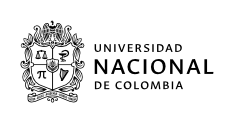Repositorios bibliográficos


Interested in submitting to this journal? We recommend that you review the About the Journal page for the journal's section policies, as well as the Author Guidelines. Authors need to register with the journal prior to submitting or, if already registered, can simply log in and begin the five-step process.
Editorial Process
Step 1: Receipt of articles
Once the call for articles is closed, the editor will apply the Turnitin filter (anti-plagiarism tool) to each article to demonstrate the originality of the text. In addition, he/she will distribute via Drive and e-mail the articles without name, with the revision format and the author's rules.
Moment 2: Editorial Committee Filter
Step 3: Scientific Committee Filtering
Moment 4: Publication
To know the author's rules of the journal and have all the details: https://cienciashumanasyeconomicas.medellin.unal.edu.co/Comunicado-2018-01/Ainkaa_NA2020.pdf
VIdeocolumna
Coloquios
Ainkaa, Revista de Estudiantes de Ciencia Política
Universidad Nacional de Colombia, Sede Medellín
Facultad de Ciencias Humanas y Económicas
Dirección: Carrera 65 Nro. 59A - 110 - Núcleo el Volador, Bloque 46, piso 3, Oficina de Proyectos 305, módulo 2
Correo electrónico: ainkaa_med@unal.edu.co
Medellín, Colombia, Suramérica

